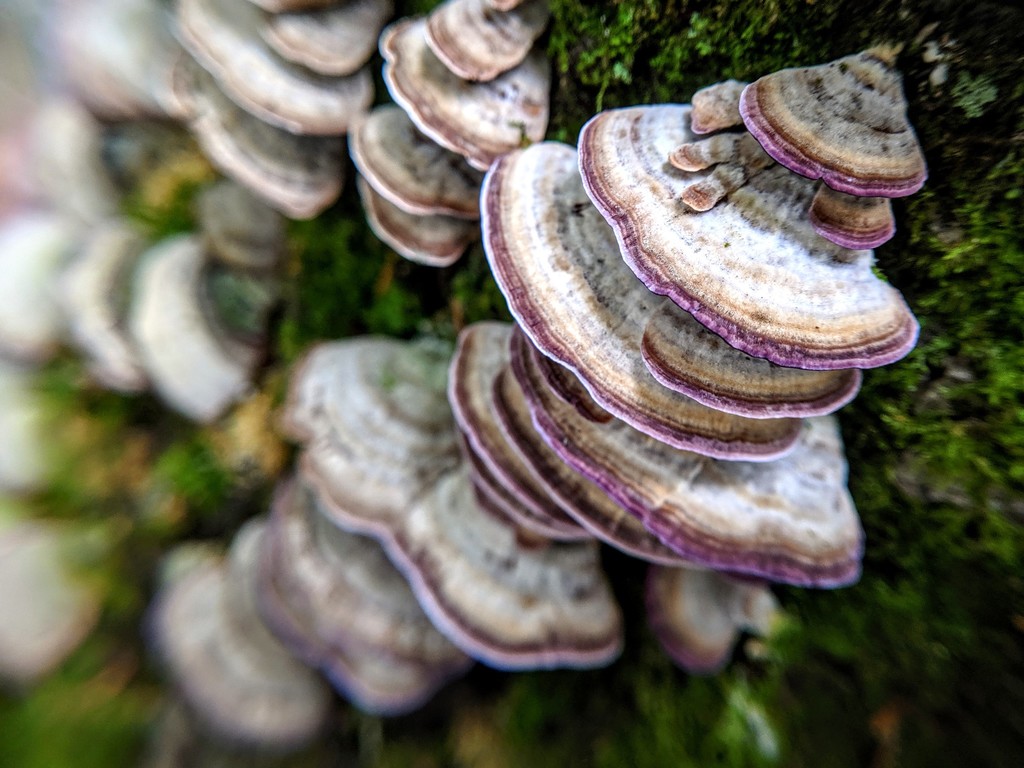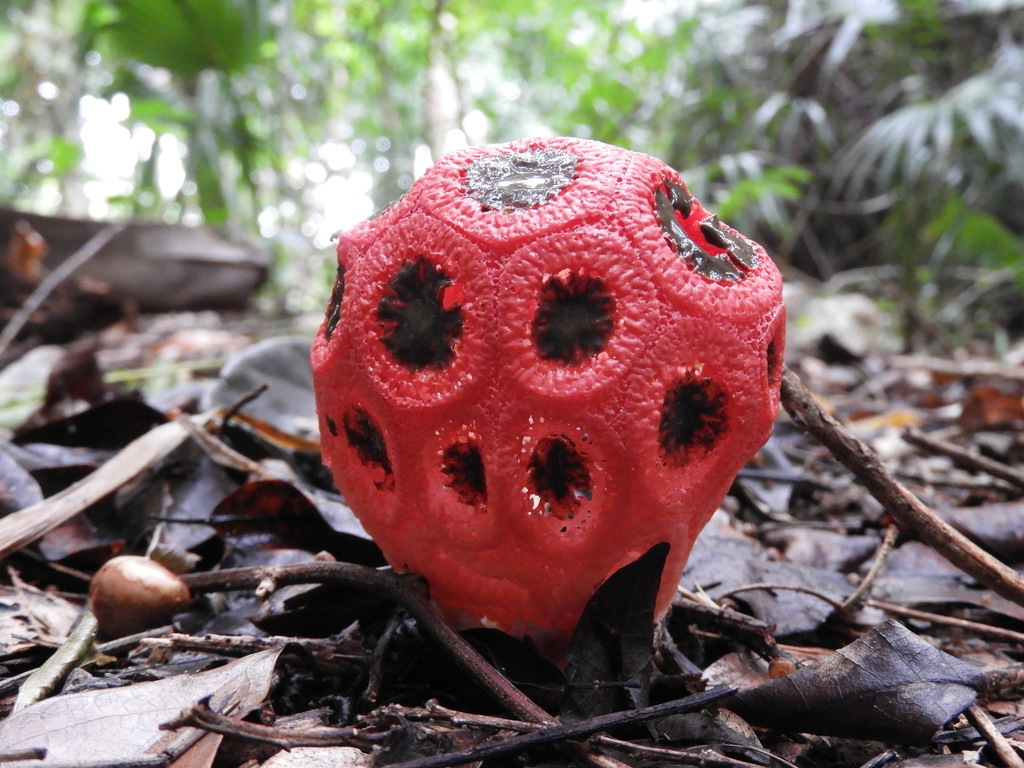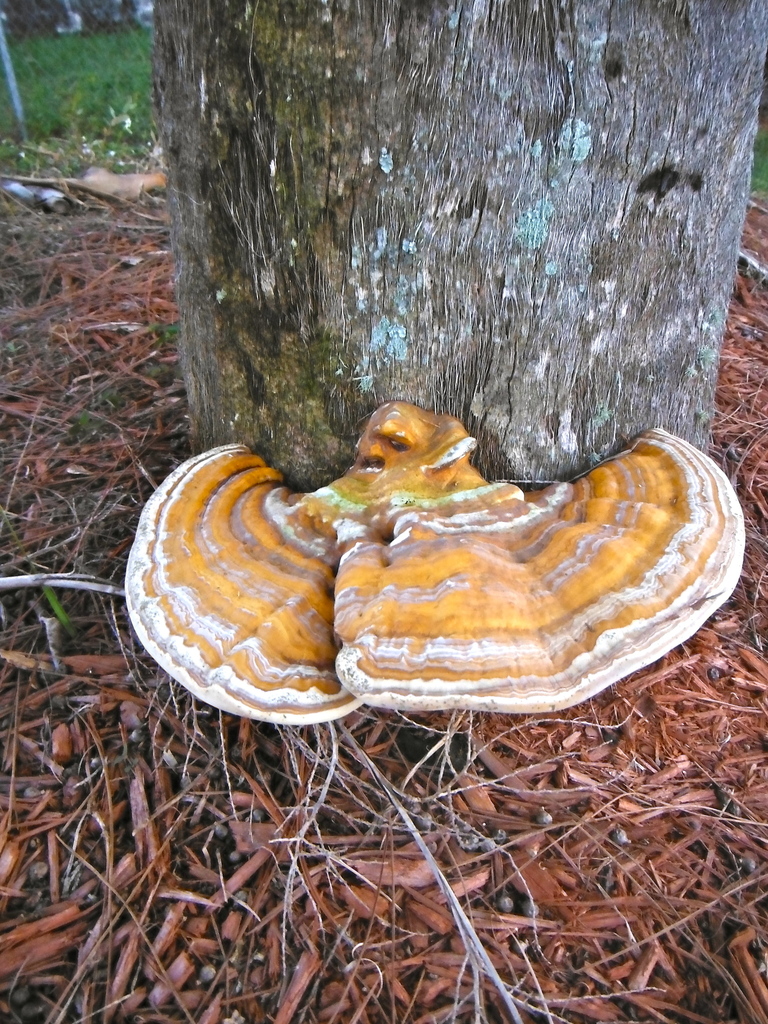
Found among the more than 650 that species Project Stay Planted participants have logged in the iNaturalist app are 41 species of lichen and fungi, which are among the least-understood and most mysterious of organisms. We figured this was a perfect opening to explore fungi and their duality, as both life force and cause of death in the plant world, and cure to and cause of disease in the human one.
We draw from the Royal Botanic Garden, Kew’s 2018 State of the World’s Fungi, a first-of-its-kind synopsis of these organisms. You may be wondering why we aren’t calling them “plants,” and that’s Fungi Fact No. 1: They’re not. Fungi were once believed to be simple or lower forms of plants, but their characteristics make them more closely related to animals. But they don’t have all the makings of fauna, either. About 50 years ago, fungi got their own kingdom, with species ranging from single-celled yeasts to complex, multi-cellular bodies.
Let’s start with fungi as friends:
- Fungi are associated with the roots of almost all plants, including forest trees and most crops. They act as living intermediaries between plants and soil. In doing so, they help plants by absorbing water, nutrients, and minerals. Fungi, in turn, benefit from a steady source of carbohydrates from the plants.
- Orchids — favorites at the Garden — rely on fungi for germination and survival as their seeds lack food reserves.
- Fungi help sequester carbon dioxide, trapping the gas implicated in global warming.
- Fungi help plants grow larger external structures, such as flowers, facilitating pollination. They also produce chemeicals to resist pests, which can enhance a plant’s defenses.
- Fungi make lots of money! The global market for edible mushrooms is $42 billion a year, according to Kew.
- They play pivotal roles in the making of yeast-based foods and drinks, such as breads, cheeses, and beers.
- Speaking of yeast, some 15% of vaccines and therapeutic proteins are made in yeasts.
- Fungi also include medically useful species such as Penicillium.
- If you want a different kind of “medicine,” there are 216 types of hallucinogenic mushrooms. Enough on that subject!
Fungi also can make for a formidable foe:
- Fungal pathogens are killing trees. In the United States, they’re afflicting dogwoods with a lethal disease, Dogwood anthracnose, whose death also takes away an important food source for birds and mammals that rely on its fruits.
- Closer to home, the beetle-transmitted Laurel wilt (Raffaelea lauricola) is a fungus that’s killing avocados (Persea americana) and native trees like the swamp bay (Persea borbonia).
- Fungi make people sick, too, as anyone who has ever suffered from a candida infection, ringworm, or the mold infection aspergillosis knows.
- Incidence of fungal diseases is rising. People inadvertently spread fungi as they move about the globe and as human development encroaches on wilderness. A warming climate is also contributing to their prevalence.
Scientists have only scratched the surface in their knowledge of fungi, and that’s why we encourage Project Stay Planted participants to look for these organisms as they do plants. Observations logged in iNaturalist can help scientists better understand plant-fungal interactions, and track the spread of fungal pathogens, such as Ganoderma, which has been recorded in the project. They even might help researchers discover more about fungi’s role in trapping carbon dioxide, possibly the next frontier in climate science.
Project Stay Planted formally runs through May 25, though we encourage participants to become lifelong users. Explore our Project Stay Planted resources to learn more.
 About the Author
About the Author
Jennifer Reed is the Editorial Director of Naples Botanical Garden and a longtime Southwest Florida journalist.



